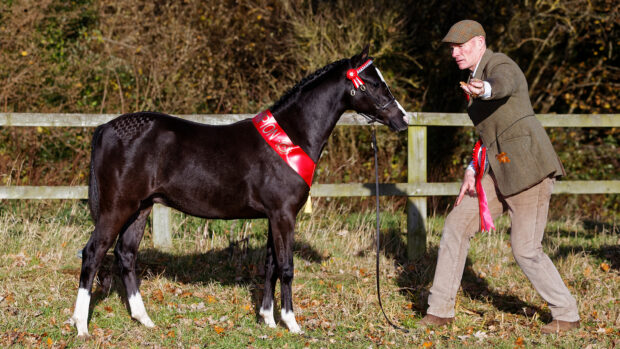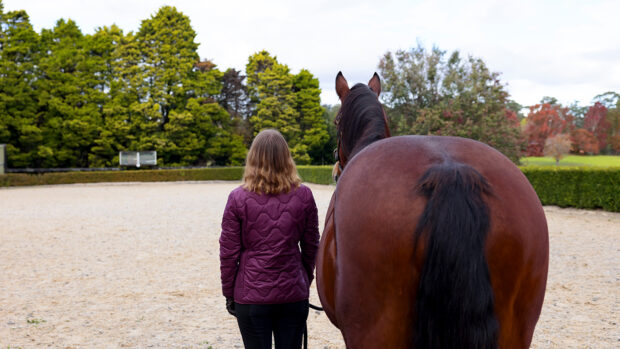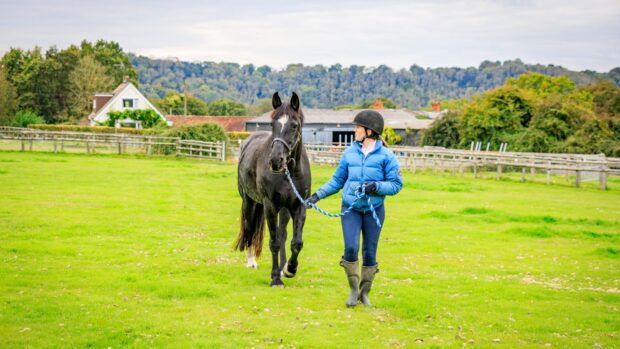Horses who are difficult with their feet can range from being annoying to downright dangerous. Farrier Richard Chard points out that picking up feet and handling legs should be part of a foal’s first experience.
“Once a foal is used to being stroked all over, it is a question of running the hand down the back of the leg and usually the foot will come up naturally,” he says.
“It is important not to expect any more than a lift of the foot, which should immediately be followed by praise and replacing it to the floor. As the foal becomes accustomed to this, the time for which the foot is held can be extended.
“This should be a gradual process achieved by repetition over days or weeks. The principles can be applied to a horse of any age that is not used to having its legs handled. Be careful not to just grab the fetlock and pull, which will make the horse feel as if it is being attacked.”
Susan Attew of the Holme Grove Stud uses much the same methods with her youngsters, but finds that for those who are very difficult, particularly with their hindlegs, a little extra distance is safer.
“For horses that snatch their legs back or kick, I use a soft, thick leading rein. Obviously, ensure you are protected with hat, gloves and boots and that the horse is comfortable with the rope. Then stand with your back to the head; I prefer to hold the horse myself so I can circle it around me easily.
“If you place the leading rein behind and below the fetlock, you can gently pull the leg forward with the rope and the leg will lift. I only expect an inch at a time, then the time off the ground can be increased as I decide when the leg will return to the ground.”
Horse trainer Doug Hicks has encountered horses that lash out and will not even allow their legs to be touched. If all causes of pain have been eliminated, he suggests using a false arm.
“Take half a broomstick, put a sleeve over it, stuff it with straw and put a glove on the end,” he says.
“Make sure that you are suitable clothed and working in a safe area. Hold the horse in one hand and use the false arm to touch his legs while staying out of reach. Try to keep the arm on the leg until he stops kicking out and is comfortable with it. Then remove it and praise him.
“In time the horse will accept that you are not going to harm him or force him into holding his leg up, and will learn to co-operate.
“When horses do accept having their feet picked up, do not try to move a hindleg backwards until he is really comfortable with all previous training. If there is a problem, go back a step or two and re-establish the confidence before trying again.”
If your horse knows what it’s all about but has a tendency to plant himself to the ground, there are other methods you can try. Leaning against his shoulder will almost certainly mean he leans back, so Doug Hicks suggests just gently squeezing the chestnut on the inside of his leg.
“This isn’t as effective with the hindlegs, so try squeezing the hock instead,” he says.
Others swear by a light pinch to the tendon at the back of the leg, or tap to the fetlock area.
- This feature first appeared in H&H (2 September 2004)



